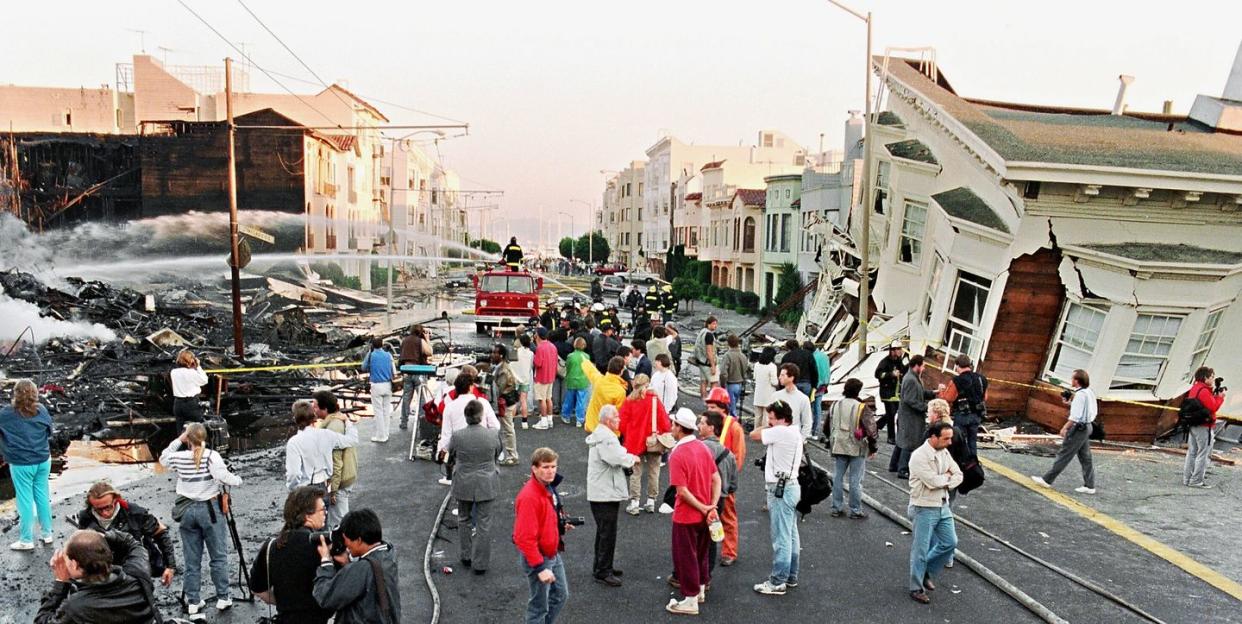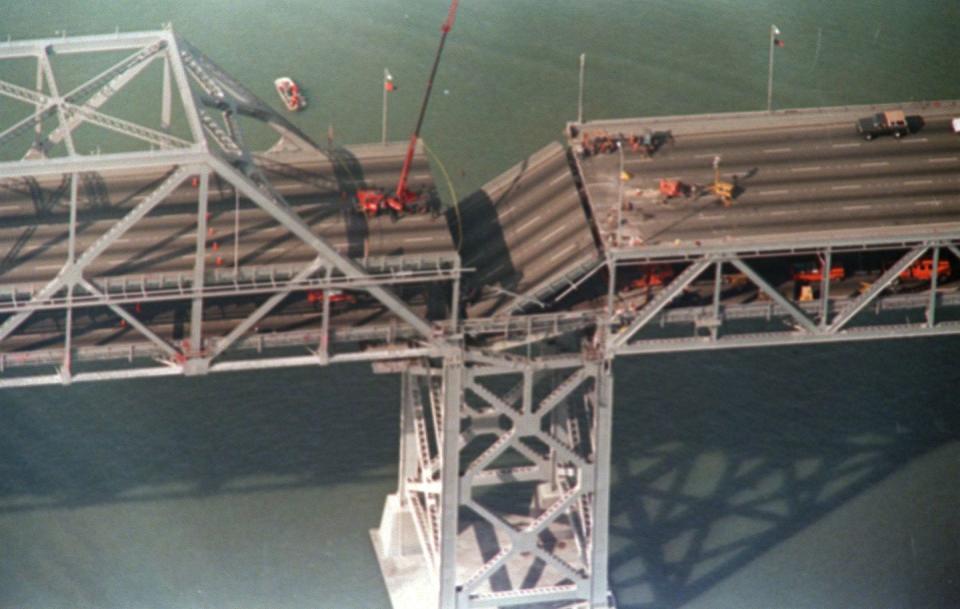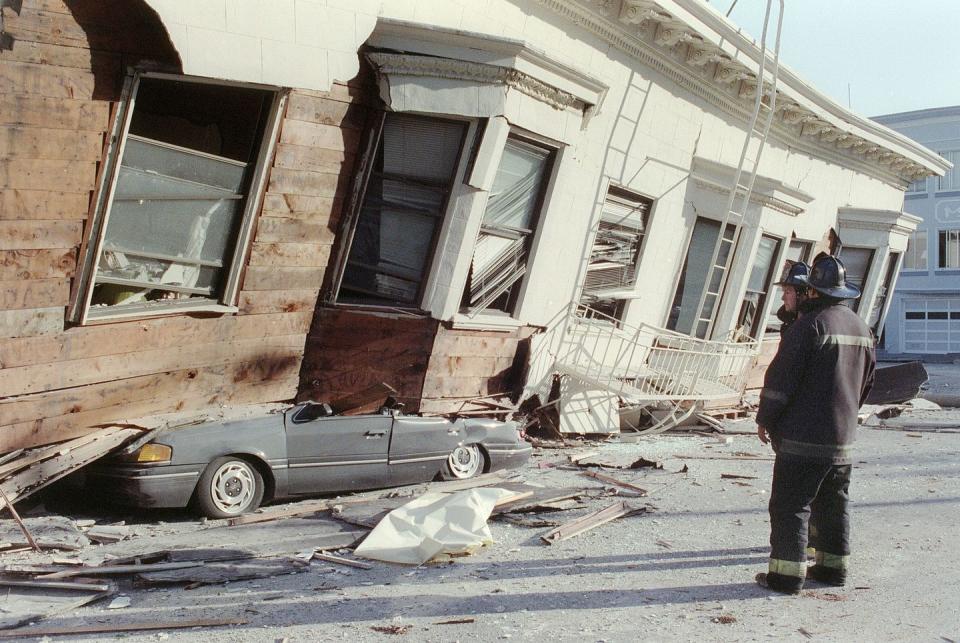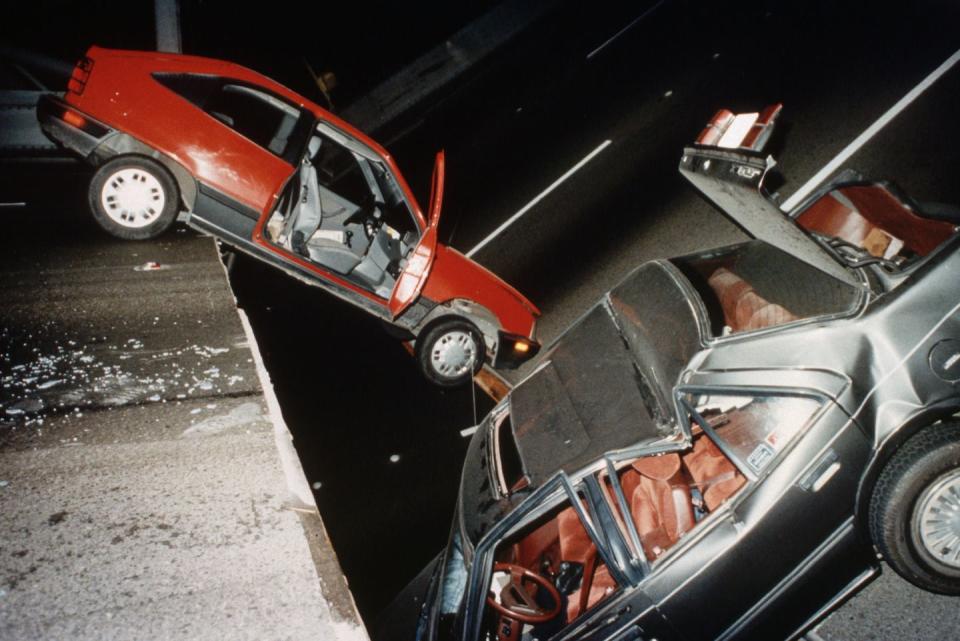California Announces New Earthquake Early Warning System

Uists developed the app to alert users to shaking caused by a magnitude 4.5 earthquake or greater.
Even a few seconds of warning could help people prepare for intense shaking.
On the 30th anniversary of California's Loma Prieta Earthquake, which killed 63 people in October 1989, U.C. Berkeley and its partners announced a new update to the MyShake App, which will give users several seconds of warning before they feel the shaking of an earthquake occurs.
“This is a really exciting day,” U.C. Berkeley seismologist Richard Allen said in a press conference. “Finally, an earthquake early warning system is here for the whole state of California.”
The shaking waves of an earthquake travel across Earth’s surface at speeds of around 0.5 to 3 miles per second, according to the USGS. In the seconds after an earthquake occurs, nearby seismic sensors pick up on the shaking and send a push notification to users, alerting them that they may soon feel shaking. At the moment, the MyShake app is set to alert iOS and Android users in the event of a 4.5 magnitude earthquake or stronger.

It’s certainly not a flawless system—some alerts may come late and the system may miss some earthquakes, Allen told the Los Angeles Times. But, he stressed, “we feel like it’s at a point where we can really make a difference. It will improve over time.”
Scientists successfully tested the app this week after two earthquakes, a 4.5 and 4.7, struck the Bay Area and the Central Coast. In the case of the Bay Area quake, alerts reached users in a median time of about 2.1 seconds, Allen told the San Francisco Chronicle. Users in the Central Coast were given a 1.6-second heads up before the shaking began.
Part of the California Earthquake Early Warning System, the app will also work in conjunction with Wireless Emergency Alerts system—the blaring notifications that flash on all phone screens in the event of an Amber Alert, wildfire, or hazardous weather conditions. These alerts will be sent to users regardless of whether they’ve downloaded the app.
MyShake also provides users with helpful information about how to prepare for the inevitable next earthquake, and uses your phone's accelerometers to collect ground shaking data to help scientists improve the app's accuracy.
MyShake notifications are simple, and won't display how strong the earthquake is or where its epicenter is located. According to Allen, research has shown that this added information may serve to confuse users. The simpler the notification, he said, the better.
“The right message to send is: There’s an earthquake. Drop cover and hold on,” Allen said.
Why is it so hard to develop an early warning system?

While there’s no way of knowing when the next “Big One” will strike, earthquake early warning systems provide citizens with the opportunity to brace themselves after an earthquake has started, but before shaking occurs.
People have proposed these systems in one form or another since the infamous 1906 earthquake that struck San Francisco. The San Francisco Chronicle published a piece shortly after the temblor proposing such a system that might warn people via telegraph, according to the Los Angeles Times.
After Loma Prieta, a rough system was put in place in the Santa Cruz Mountains in an effort to warn first responders who were working to locate survivors and victims on the flattened Nimitz freeway. On multiple occasions, this rough prototype successfully alerted responders to impending aftershocks.
Scientists have worked in earnest since 2005 to develop an earthquake early warning system. In 2012, scientists from the U.S. Geological Society, the California Office of Emergency Services, UC Berkeley, and other institutions developed ShakeAlert, a prototype to the MyShake app that has provided warnings to some California residents.
The U.S. has seemingly lagged behind Japan and Mexico, both of which have had earthquake early warning systems in place for several years. (Mexico’s early warning system, however, wasn’t able to alert Mexico City residents to either of the two 2017 earthquakes that collectively killed more 450 people.)
It’s a complicated scenario, Allen said. Both of these countries sit along subducting tectonic plate boundaries—regions where one tectonic plate slides beneath another. In these two regions, that fault is often many miles offshore, meaning they have more warning time before shaking occurs.
"The original early warning systems were built for earthquakes that were a little bit further away," Allen said.
Much of California, including Los Angeles and the Bay Area, on the other hand, are positioned right on top of the San Andreas fault, a transform fault, where two plates slide past each other. The amount of time between when the fault ruptures and when people begin to feel shaking is minimal, so there isn’t much opportunity for a substantial warning.
"For us to have time to take action here in California, we needed to speed up system significantly, improve our understanding of earthquakes and the engineering of the systems to reduce the delays, so that people would still get a warning time," Allen said.
Just how much can you do in 15 seconds?

It doesn’t sound like much, but experts insist that even a seconds-long warning could provide people with enough time to place themselves in a safer situation in the event of a major earthquake. In 15 seconds, you can pop under your desk or huddle beneath a sturdy table. That time could give you the opportunity to turn off a stove or blow out a candle.
For surgeons, dentists, and others who perform delicate procedures, it could give them the time to pause their work. It could allow officials to shut off or slow transportation systems, turn off transmission lines, halt elevators, and spring open fire station doors so first responders can get to work.
Experts believe systems like these, which provide just seconds of warning, could help save thousands of lives when the next disaster strikes. “We think we have the most sophisticated early warning system in the world right now,” Allen said.
You Might Also Like

